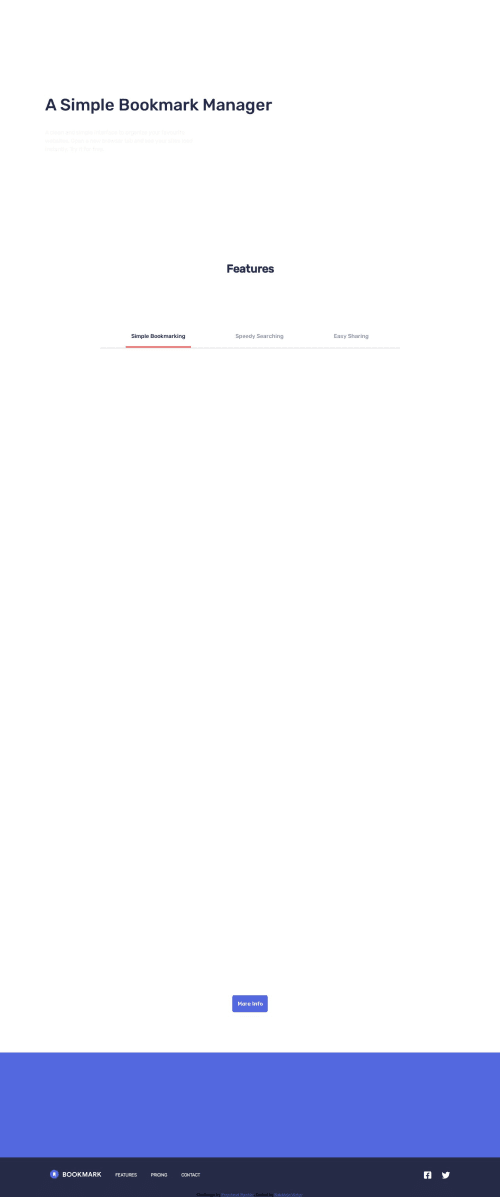Animated Bookmark Landing Page 😁😁

Solution retrospective
This is my first time using a scroll animation, it took me a while to figure out but I'm really glad that it turned out great ! 😁
This by far the best landing page that i have done, and i can't wait to make more amazing webpages and websites !
What challenges did you encounter, and how did you overcome them?The only challenge i faced was how to use the scroll animation
What specific areas of your project would you like help with?Well this is my first time doing scroll animation, so any suggestions on the transitions and delay and better approaches to scroll animation will be highly appreciated, Thanks ! ^_^
Please log in to post a comment
Log in with GitHubCommunity feedback
- @grace-snow
I'm afraid the animations in this make it break accessibility requirements around reflow and resize. When I view on mobile it's very disorientating because the content keeps disappearing and reappearing as I scroll and try to read it. This becomes impossible if I enlarge the text size or view in landscape.
As a general rule, it's not great to animate whole blocks of content. It can be really bad for accessibility and SEO. But if you do ever animate blocks of content, make sure they only animate in then persist. Don't let them disappear again like it's doing now.
It's also generally really bad practice to use sticky header bars like this. Again, consider smaller phones, landscape or people who need larger text. A fixed big bar obscures so much content.
Also when I had text enlarged I couldn't access the nav at all because I was unable to scroll to reach it off the side of the screen.
Marked as helpful
Join our Discord community
Join thousands of Frontend Mentor community members taking the challenges, sharing resources, helping each other, and chatting about all things front-end!
Join our Discord